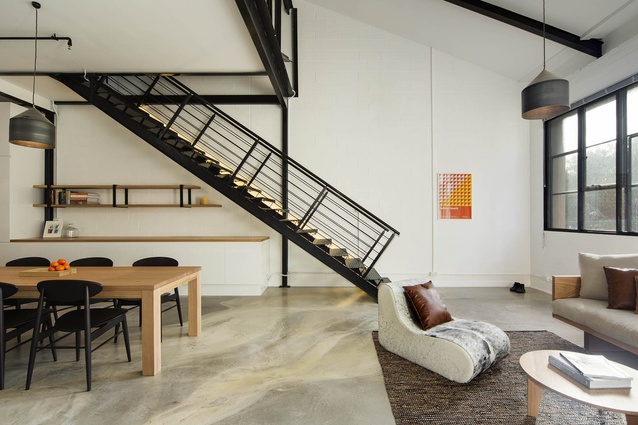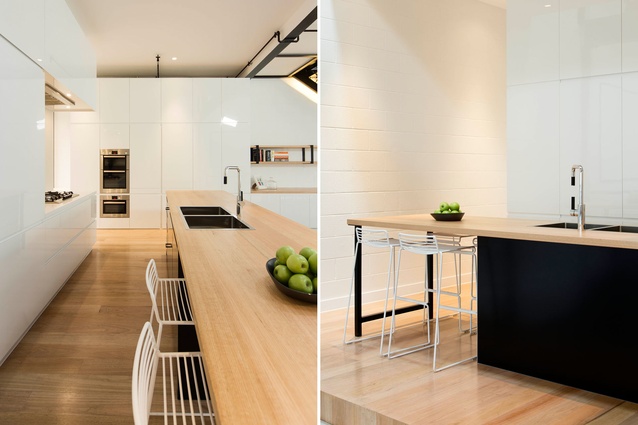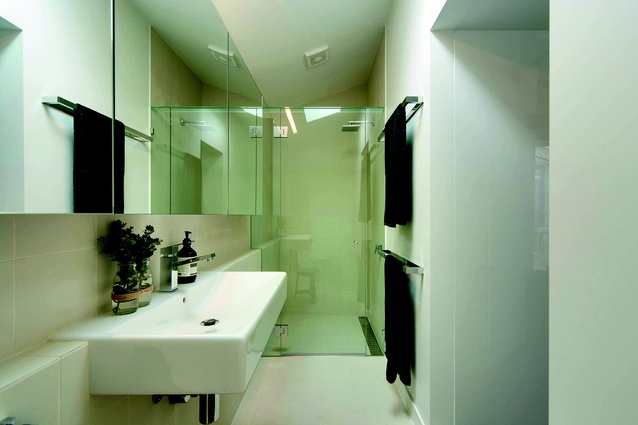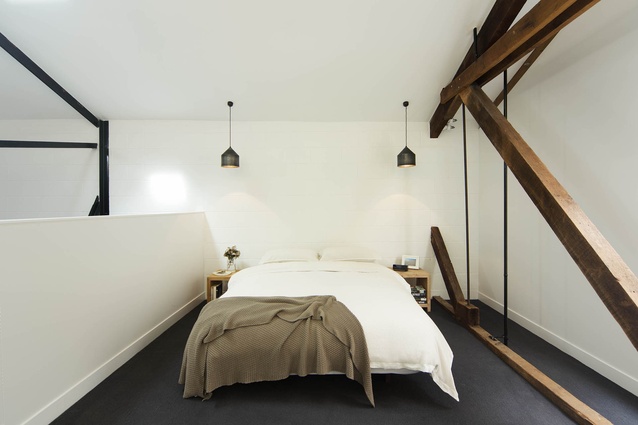The Warehouse
There is a satisfying weight, a heft, to the warehouse typology. Beyond the visual cues – saw-tooth roofs, multi-paned windows, sturdy blockwork – it is perhaps the generosity of the volumes that makes a former warehouse such a fecund starting point for residential architecture.
In this project, Techné Architects has deftly fashioned a finely detailed, 180m² apartment within an industrial, three-storey shell. The building itself boasts a rich history – it has served time as an office, a dance studio and, most recently, a residence. Fortunately, through each of these eras, the original structure survived largely intact.
It was the originality of the property that appealed to clients Dianne and Frank McCulloch. With children now grown up, they were preparing to downsize after selling their suburban family home. “We looked at quite a few before we found this one,” says Frank. “The sense of history really appealed.”
Dianne and Frank commissioned Techné Architects to transform the dwelling into something more livable and contemporary. The architect’s scheme sought to retain as much of the character as possible. “Retaining the warehouse aesthetic was really important to Dianne and Frank,” says Steve McKeag, senior associate at Techné. “It became a really collaborative process.”
New elements were also inserted into the space. The heart of the home is the airy kitchen on the first floor. The banks of high-gloss cupboards were inset from the exterior walls. Black sprinkler pipes slide in through the gaps, referencing the warehouse vernacular. The timber-topped island bench is like a piece of furniture, thanks to its trestle-like legs at each end. The kitchen itself sits atop a timber plinth, stepping up from the polished concrete floor. It effectively delineates the space.
Behind the kitchen, a small hallway steps back to a compact powder room. Once again, this new element has been pulled from the original structure, allowing light from the window in the western wall to flow into the kitchen and dining zone.
“It was important to have that hallway there – to allow the light to flood in on either side of the central floating pod. The light makes a real difference to this space,” says McKeag. On the other side of the kitchen, a small study provides a moment of seclusion in the open-plan space.
The rest of this floor is occupied by the living and dining areas. The lounge area is bathed in light from the multi-paned windows that face towards a railway line partly hidden by leafy peppercorn trees. “I love the big windows with the small panes,” Dianne notes. “It has that real warehouse character.”
A commitment to craft is evident throughout. The material palette is pared-back and subtly applied. Black-painted steel elements are balanced by white-painted brickwork that still bares the texture of its industrial origins. Elegant black pendant lights descend from the raked roof.
Above the kitchen, the master bedroom hovers on a mezzanine level. A bank of wardrobes flanks a compact ensuite against the northern wall, while the view from the bedroom is characterized by the elegant tracery of steel beams that zig-zag across the space.
The architect’s respect for the fabric of the warehouse is perhaps best demonstrated by a neat interstitial space that slides along the rear wall of the mezzanine. Here, a solid timber beam angles upwards past the windows and brick wall. A less sensitive architect might have removed it to add an extra few centimetres to the floor space but, left intact, it becomes a reminder of the structure’s history and solidity.
Skylights in the ceiling were retained. “We enlarged them to make them operable. When they’re open, you get a really impressive draft coming through,” McKeag explains. This Venturi effect drags hot air up and out, maintaining comfortable internal temperatures for most of the year.
The second bedroom is located on the ground floor, at the rear of the property. It is more enclosed and intimate than the master bedroom above. A neat ensuite is concealed alongside it. This second bedroom is enclosed by a magnificent heavyweight door on an industrial track. “There’s a solidity in these steel doors,” says McKeag. “We liked that realness and authenticity.”
The lower level also contains a garage and an entry area. The architect has resisted the urge to fill the space, allowing it instead to flow up into the main living space, past a thoughtfully designed wine rack. Beneath the stairs, a compact European laundry has been inserted.
A keen cyclist, Frank has commandeered the ground-floor garage as a bicycle workshop. When he’s not working in it, this space acts as a sort of street-facing enclosed terrace. “It’s really nice having the roller door open. The neighbours pass by and say hello,” Dianne says. “We haven’t struggled to find on-street parking and Frank rides his bike every day, so it makes sense to use this space as a workshop.”
It’s just one final example of what makes this project so successful – elegantly adapted (and adaptable) spaces that are matched so perfectly to the lives of its inhabitants.















